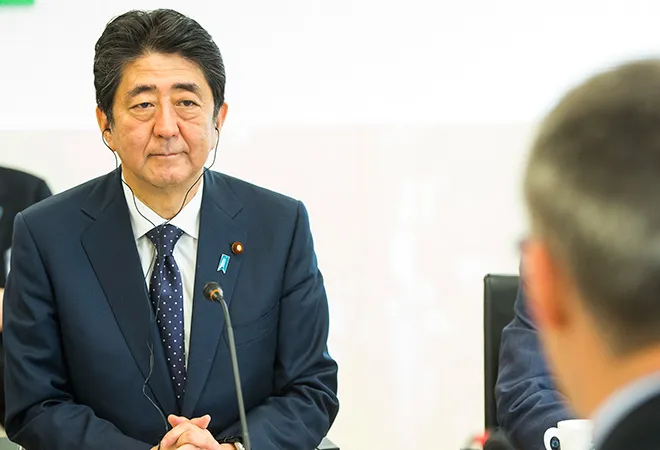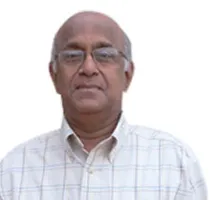
On 14 May, Japan’s Prime Minister, Shinzo Abe, made an announcement
lifting the state of emergency from 39 out of the total 47 prefectures. Earlier, in the month of April , he had
extended the emergency to seven prefectures and then to the whole of Japan until 31 May. The eight prefectures — Tokyo, Hokkaido, Chiba, Kanagawa, Saitama, Osaka, Hyogo and Kyoto — will, however, continue to be under the emergency, considering their overstressed healthcare systems and the risks of the revival of new outbreaks of the epidemic. The residents in these regions are asked to continue to reduce human interaction by 80% and also avoid non-essential outings. The government will review in a week’s time whether it would be appropriate to lift the emergency measures in these prefectures too.
The 14 May decision — though bold, but not very surprising — has raised many eyebrows as to the reasons that have spurred Abe to take this action. While making the decision, Abe himself referred to the declining number of virus cases in the 39 prefectures, the marked increase in the number of patients recovered and the expanding testing infrastructure. Second, there has been considerable “corona fatigue” among the people who long to see the revival of some normal activities. In particular, the
Japanese business community has been pushing for the resumption of their commercial activities.
While making the decision, Abe himself referred to the declining number of virus cases in the 39 prefectures, the marked increase in the number of patients recovered and the expanding testing infrastructure.
It was undoubtedly a big political test, if not a gamble, for Abe to take this decision given the huge uncertainties involved in striking a balance between human lives and the need to maintain a healthy national economy. Abe himself struck a note of caution that there are numerous hurdles — health and economic — before the country could go back to pre-coronavirus normality. He advised the people to adopt a ‘new normal’, including telecommuting and wearing masks. Even after the lifting of emergency, he warned: “the corona will continue to exist for sure.”
The official advisory panel, which advised the government to lift the emergency, has
prepared a road map on how to check the spread of the virus across the country and classified the prefectures into certain categories. The first specially designated classification lists those eight prefectures which require precautionary measures because of the largest number of COVID-19 cases. The second classification includes those areas with about half of the number of new infection cases of the specially designated prefectures. Residents of these areas are advised not to visit other prefectures and avoid non-essential outing. The third classification would include prefectures with even fewer infections, but they should continue monitoring new infections in their jurisdictions.
The annual Golden Week holiday which lasted for a week during 28 April to 5 May marked a turnaround in the whole fight against COVID-19. Normally, this is the time when thousands of Japanese travel inside and outside the country. But this year, they showed extraordinary self-restraint by staying indoors all through. This was unlike their earlier behaviour at the annual cherry blossom festival when thousands of Japanese crowded parks and gardens.
The annual Golden Week holiday which lasted for a week during 28 April to 5 May marked a turnaround in the whole fight against COVID-19.
However, Abe’s decision to lift the emergency will come under greater scrutiny from now onwards. In particular, the number of new cases in Tokyo and Osaka areas has tended to sharply decline. If this trend continues till 31 May and beyond, the chances of stemming the surge of the virus are quite strong.
Role of governors
The COVID-19 story in Japan reveals some interesting aspects of the
relations between the central government and the prefectural governors, some of whom have displayed considerable assertiveness to put across their views with force. This is quite remarkable in Japan where centralisation is the accepted norm. For instance, initially, the Abe government’s response was somewhat slow and sluggish, even when the coronavirus cases were surging. He waited until the first week of April to declare a state of emergency. This was reflected in the falling approval rates for him in some opinion polls. In contrast, some governors took prompt action to contain the spread of the virus. For instance, Hokkaido Governor Naomichi Suzuki declared a state of emergency in Hokkaido on 28 February even though he has no legal authority to do so.
Similarly,
Tokyo Governor Yuriko Koike ran into serious disagreement with the central government when she wanted to close certain businesses in view of the COVID-19 crisis. But when Abe objected and declined to fund the affected parties, Koike asserted that her government would do the funding.
Abe waited until the first week of April to declare a state of emergency. This was reflected in the falling approval rates for him in some opinion polls.
Hirofumi Yoshimura, Governor of Osaka, also differed with Abe in the first week of May following the declaration of emergency on the question of issuing an exit strategy once the emergency is over. When Abe did not comply with him, Yoshimura published his own exit strategy, much to the liking of many fellow governors.
Need for constitutional amendment
COVID-19 has also highlighted one serious limitation in Japanese response system to an emergency situation. The Japanese constitution does not embody any provision on dealing with such an eventuality. When an emergency in the form of a natural disaster occurs, the government has to pass special legislative measures to meet the crisis. Considerable delay could be caused due to reasons like the Diet not being in session, or political differences coming in the way of a consensus, etc. It happened in the present case of declaring a national emergency. Many in Japan feel rightly that Japanese political parties should address this issue urgently and see that an appropriate amendment is made. But given the current political situation in the country, a constitutional amendment will continue to remain a call in wilderness.
The views expressed above belong to the author(s). ORF research and analyses now available on Telegram! Click here to access our curated content — blogs, longforms and interviews.
 On 14 May, Japan’s Prime Minister, Shinzo Abe, made an announcement lifting the state of emergency from 39 out of the total 47 prefectures. Earlier, in the month of April , he had extended the emergency to seven prefectures and then to the whole of Japan until 31 May. The eight prefectures — Tokyo, Hokkaido, Chiba, Kanagawa, Saitama, Osaka, Hyogo and Kyoto — will, however, continue to be under the emergency, considering their overstressed healthcare systems and the risks of the revival of new outbreaks of the epidemic. The residents in these regions are asked to continue to reduce human interaction by 80% and also avoid non-essential outings. The government will review in a week’s time whether it would be appropriate to lift the emergency measures in these prefectures too.
The 14 May decision — though bold, but not very surprising — has raised many eyebrows as to the reasons that have spurred Abe to take this action. While making the decision, Abe himself referred to the declining number of virus cases in the 39 prefectures, the marked increase in the number of patients recovered and the expanding testing infrastructure. Second, there has been considerable “corona fatigue” among the people who long to see the revival of some normal activities. In particular, the Japanese business community has been pushing for the resumption of their commercial activities.
On 14 May, Japan’s Prime Minister, Shinzo Abe, made an announcement lifting the state of emergency from 39 out of the total 47 prefectures. Earlier, in the month of April , he had extended the emergency to seven prefectures and then to the whole of Japan until 31 May. The eight prefectures — Tokyo, Hokkaido, Chiba, Kanagawa, Saitama, Osaka, Hyogo and Kyoto — will, however, continue to be under the emergency, considering their overstressed healthcare systems and the risks of the revival of new outbreaks of the epidemic. The residents in these regions are asked to continue to reduce human interaction by 80% and also avoid non-essential outings. The government will review in a week’s time whether it would be appropriate to lift the emergency measures in these prefectures too.
The 14 May decision — though bold, but not very surprising — has raised many eyebrows as to the reasons that have spurred Abe to take this action. While making the decision, Abe himself referred to the declining number of virus cases in the 39 prefectures, the marked increase in the number of patients recovered and the expanding testing infrastructure. Second, there has been considerable “corona fatigue” among the people who long to see the revival of some normal activities. In particular, the Japanese business community has been pushing for the resumption of their commercial activities.
